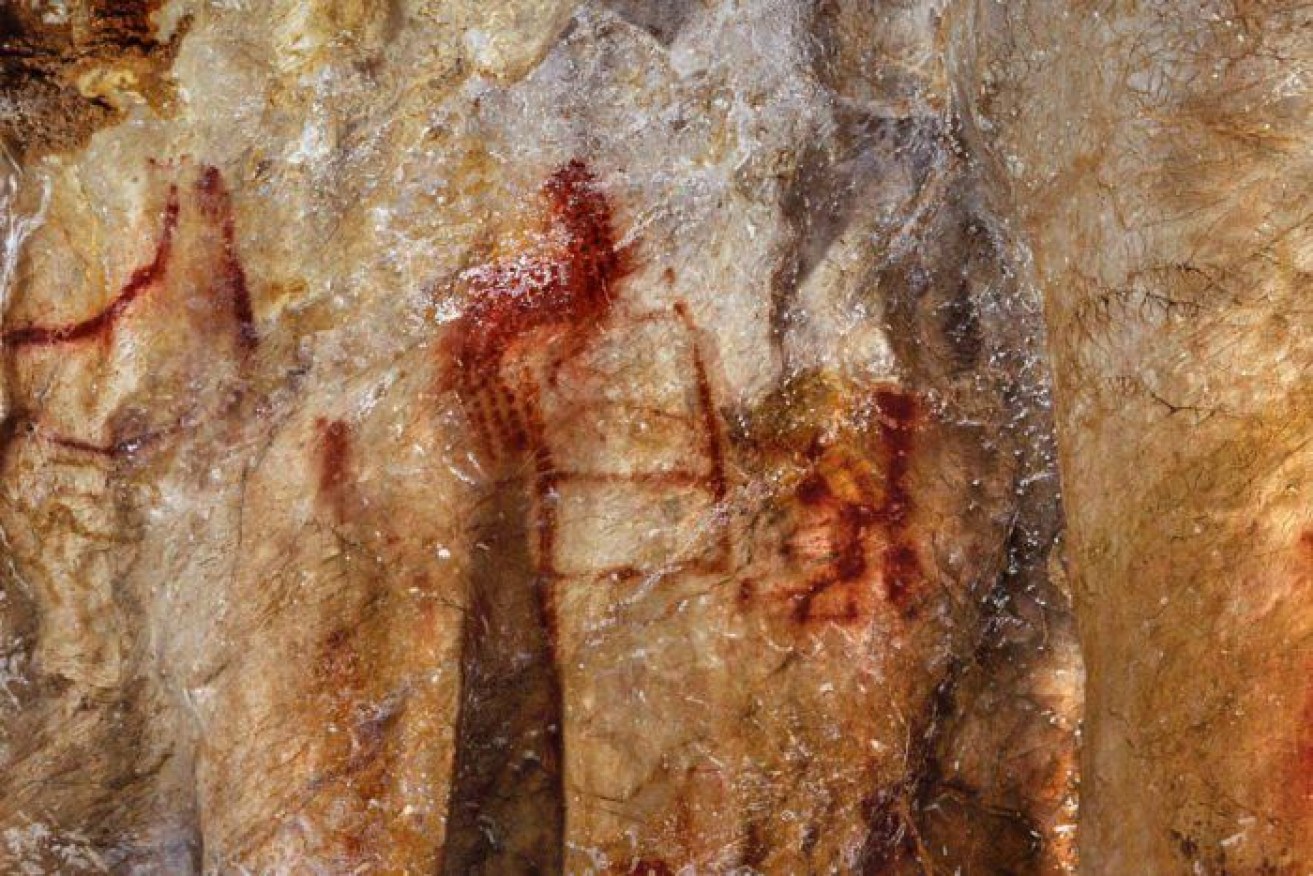World’s oldest-known rock art created by Neanderthals, not modern humans

This ladder shape painting has been dated to around 64,000 years. Photo: ABC/CD Standish
Simple red ochre designs daubed on the walls of Spanish caves 64,000 years ago suggest Neanderthals were creative thinkers just like us.
The paintings are evidence Neanderthals not only had the capacity to make art, but this ability evolved independently of modern humans, said study co-author Alistair Pike of the University of Southampton.
“One of the key features of modern human behaviour is symbolic behaviour — it’s the use of language, it’s the use of signs, it’s the use of symbols,” Professor Pike said.
“Most of that kind of behaviour has been attributed to modern humans rather than any other species.
Professor Pike said the motifs that were studied in the Spanish caves appear all over Europe.
“It wouldn’t surprise us if we were to do more dating elsewhere in Europe we would find evidence of Neanderthal painting,” he said.
Dating the age of rock art can be tricky, and identifying the artist even harder.
But recent advances in a technology called uranium/thorium dating has enabled scientists to determine the minimum age of paintings in limestone caves.
In 2012, Professor Pike and colleagues identified what was then considered the oldest-known rock art, a red dot created at least 41,000 years ago, on the walls of the El Castillo cave in north-eastern Spain.
A hand print and depiction of a “pig deer” on the walls of a cave in Sulawesi, Indonesia was also reliably dated by another team to be at least 40,000 years old.
But while the Sulawesi artist must have been a modern human since there has never been any evidence of Neanderthals in the area, it is impossible to tell who created the red dot, said Professor Pike.
Noting the earliest art in the El Castillo cave appeared to be red ochre lines, dots and hand stencils, the team decided to investigate similar paintings in other caves across Spain.
They focused on La Pasiega cave (which is part of the same system as El Castillo), Maltravieso cave near Portugal in the west; and Ardales cave in the south-west.

One of the newly-dated hand stencils was found to be around 66,000 years old. Photo: ABC/H. Collado
The caves contain a rich assortment of red ochre paintings of lines, dots, hand stencils and animals, said study co-author Dirk Hoffmann of the Max Planck Institute for Evolutionary Anthropology.
“La Pasiega particularly is breathtaking. It’s packed with cave art,” said Dr Hoffmann.
The team used uranium/thorium dating to examine calcium carbonate deposits, which build up like tree rings as water drips down onto the paintings.
“The closer you get to the cave wall and the pigment the older your sample should be,” Dr Hoffmann said.
“So we’re not dating the art, but we’re giving minimum ages.”
The team dated 53 tiny samples scraped off 25 deposits of calcium carbonate sitting over several symbolic paintings.
Features in all three caves — the ladder in La Pasiega, a hand stencil in Maltravieso, and a red dot on a stalagmite in Ardales — were all consistently older than 64,000 years.
“So significantly older than most people would expect,” he said.
Second study suggests creative culture goes back thousands of years
Dr Hoffmann also led a separate team with João Zilhão from the University of Barcelona investigating coloured marine shells in another cave in south-eastern Spain, called Cueva de los Aviones.
These shells either had perforations or contained pigments, indicating they could have been used as body ornaments or paint containers.
Dating indicated the shells were 115,000 years old, report the researchers in the journal Science Advances.
This date predates the oldest-known symbolic artefacts, thought to have been created by modern humans in Africa, by between 20,000 and 40,000 years.
-ABC








